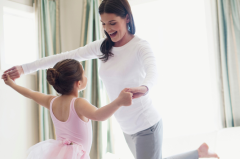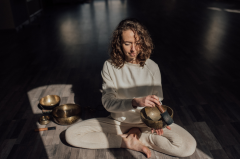Having fun is an essential aspect when it comes to the psychological benefits of dance. A biomolecular study published in the American Journal of Dance Therapy found participation in organised dance increased the “happy hormone”, serotonin, by 10 per cent and reduced the “stress” hormone, cortisol, by 15-20 per cent.
Cooper recognises that ballet is many of her students’ “happy place”, where they come to relax and let go of the stressors of their lives outside of dance.
“Sometimes I’ll watch students in class and I can just see that they are having their moment for the week, it’s their time… It’s like mindfulness in a way because you have to focus on what you’re doing and so it allows you to let go of the rest of life.”
Martin is emphatic that joy is central to her pursuit of ballet. “It’s such a joyful experience and something I hope I can continue for many, many years,” she says. “As adults, there’s that sense of always having to be productive and doing something for an end point but you’re also allowed to do something just because it’s fun.”
In addition to the psychological feel-good aspects of ballet, Cooper keenly highlights the cognitive aspects that are also beneficial to brain health. “You are using both sides of your brain, which is not common in many other forms of exercise,” she explains. “You’re using the artistic side of your brain and the logical, mathematical side of your brain because you’re counting music and remembering patterns.”
Plié prescription
The cognitive aspects of choreographic sequencing and repertoire is one of the many elements that support ballet as therapy. Programs such as Dance for Parkinson’s, Ballet for Brain Injury and dance4wellbeing have been built upon the research that demonstrates the benefits of ballet for people with conditions such as Parkinson’s disease, dementia, Alzheimer’s and brain injury.
These programs are designed to focus on the movement of dance, rather than approaching movement from a clinical perspective, and have a strong sense of musicality to guide and inspire. Importantly, participants are treated as dancers rather than patients, which in itself is integral to an individual’s sense of confidence, autonomy and wellbeing.
A study published in the Arts & Health journal recounts





